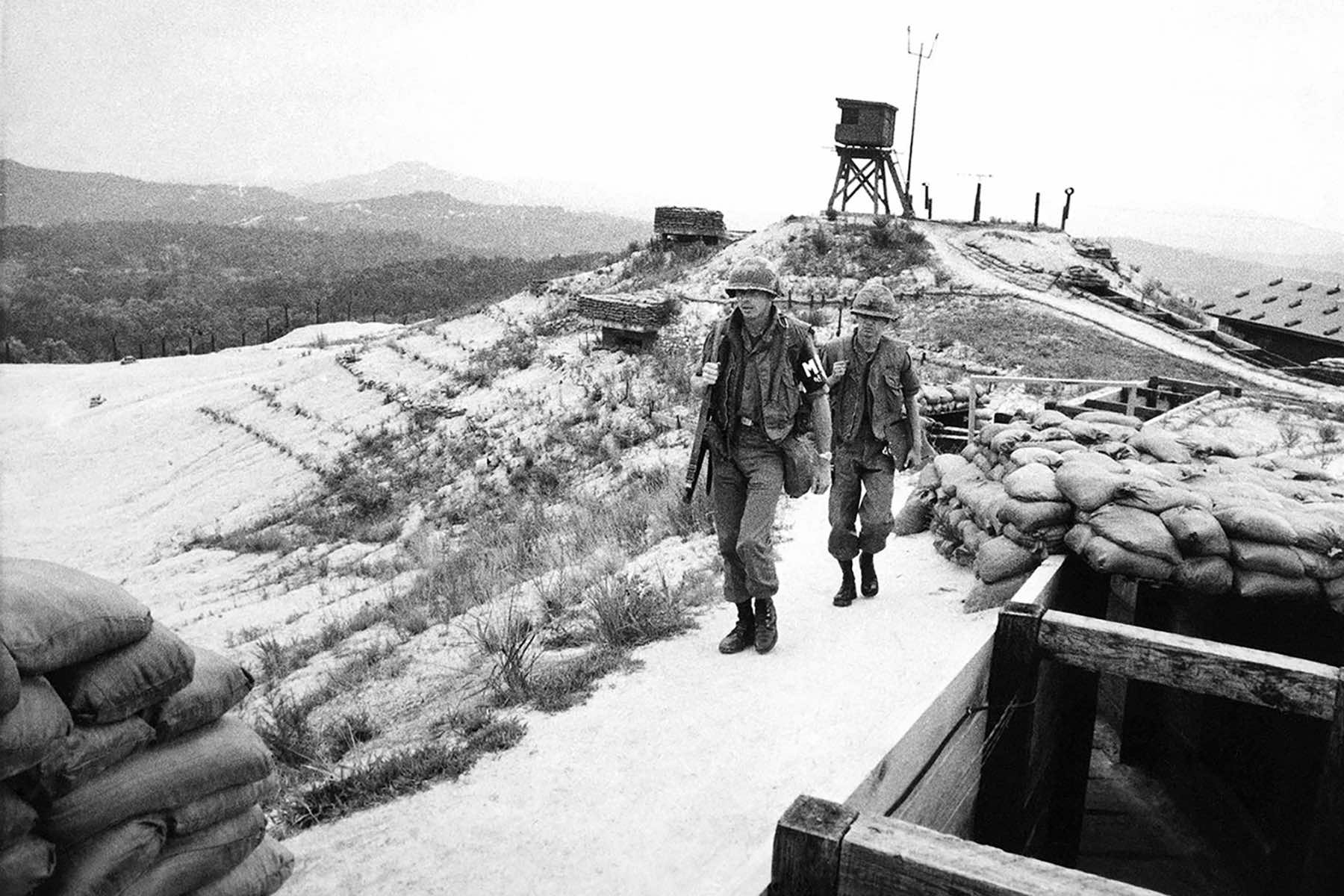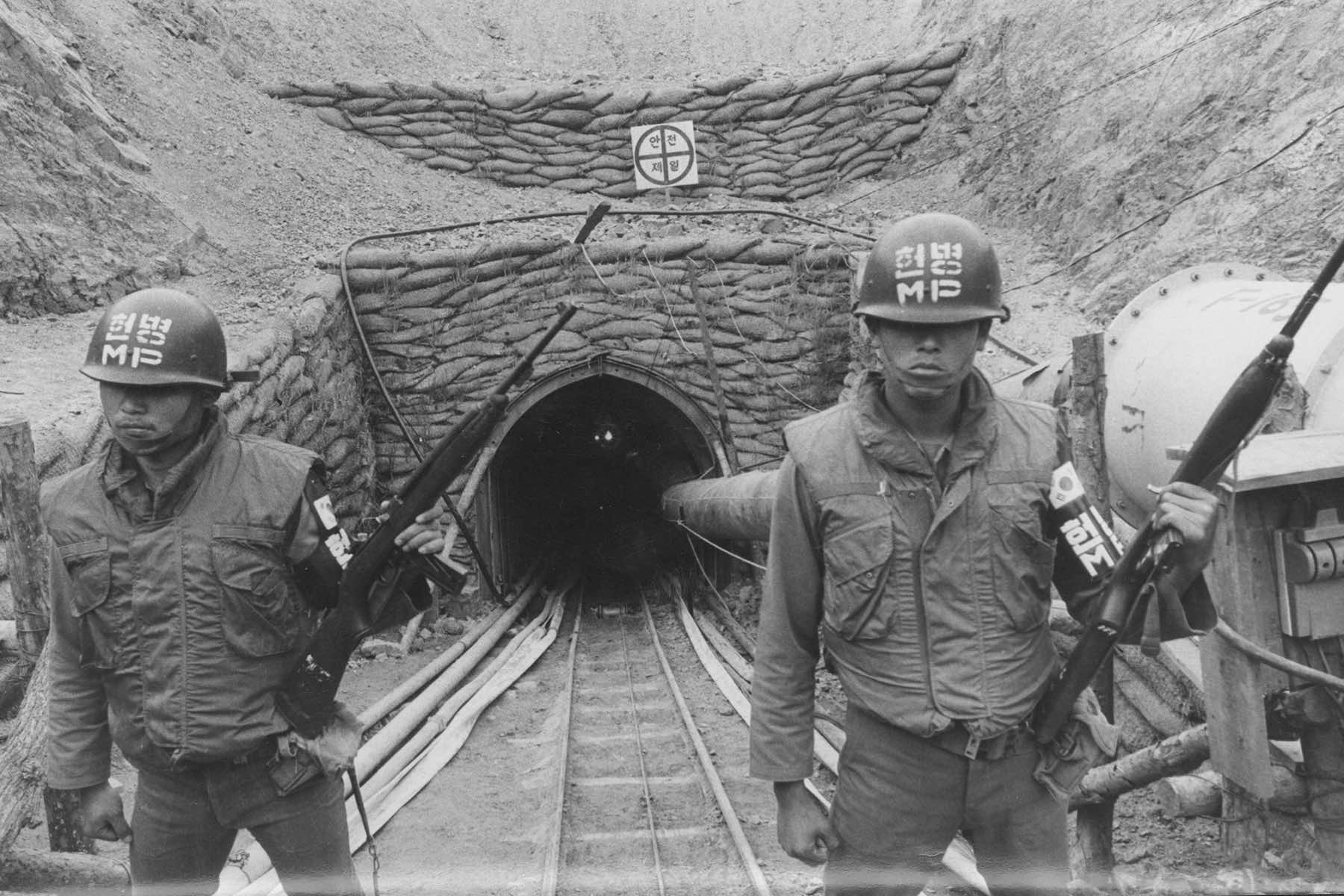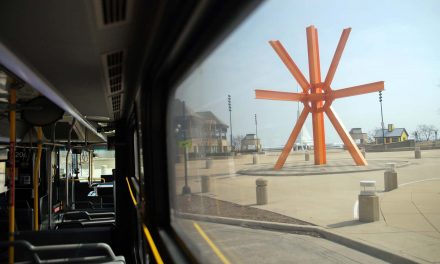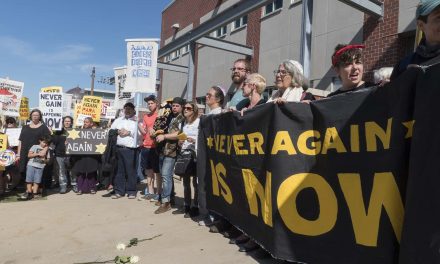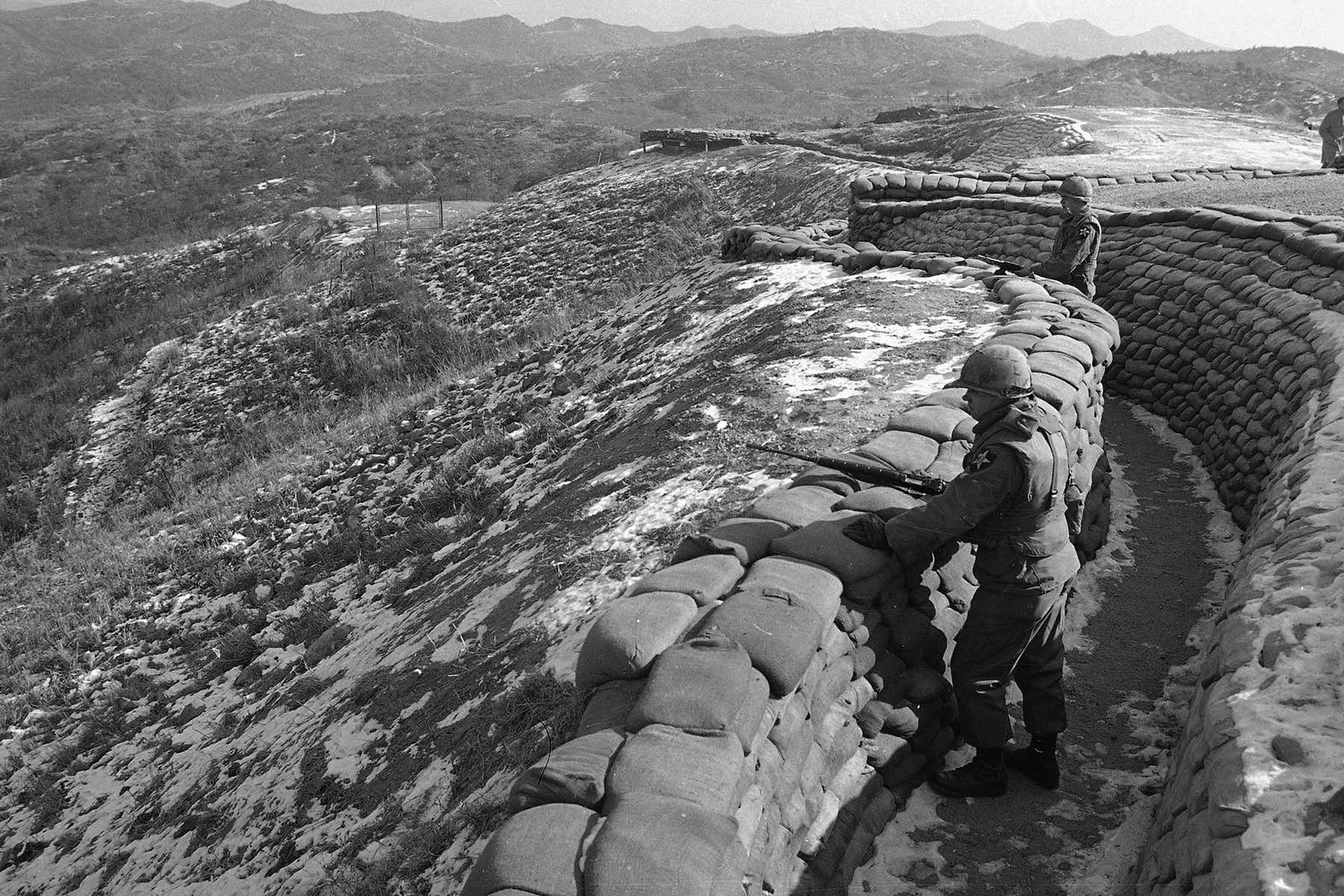
Concurrent with the turmoil of the Vietnam War, another conflict simmered on the Korean Peninsula but went largely unnoticed by the world.
Known as the Korean DMZ Conflict, also referred to as the Second Korean War, it was a series of intense incursions along the Demilitarized Zone between North and South Korea from 1966 to 1969.
The forgotten chapter of the “Forgotten War” was overshadowed by larger Cold War events, but it played a crucial role in shaping the geopolitical landscape of the region.
The first recorded military conflict between the United States and the “Hermit Kingdom” of Korea occurred in 1871, known as the Korean Expedition or Shinmiyangyo.
It was a naval operation conducted to open trade and diplomatic relations, following the example of Commodore Matthew Perry with Japan in 1853. The confrontation resulted from the destruction of the American ship General Sherman in 1866 and Korea’s isolationist policies.
The United States sought to establish formal relations and secure safe navigation for its ships in Korean waters, but the Korean government resisted. That minor conflict ended with the U.S. withdrawing after capturing several Korean forts, but no formal diplomatic relations were established at that time.
Almost one hundred years later, there would be another batch of deadly skirmishes.
The origins of the Second Korean War go back to the aftermath of the first and much larger war from 1950 to 1953. That tragic conflict was rooted in the post-World War II division of Korea along the 38th parallel.
The ideological divide between the Communist North and the Democratic South continued to fester after the war ended in a stalemate, with an armistice signed on July 27, 1953. The ceasefire established the DMZ, a heavily fortified buffer zone that remains one of the most tense and dangerous borders in the world.
By the mid-1960s, the global focus had shifted to Vietnam, where U.S. forces were heavily engaged in another divided nation. Sensing an opportunity, North Korean leader Kim Il-Sung initiated a strategy of irregular warfare aimed at destabilizing South Korea and weakening U.S. resolve.
That marked the beginning of the Second Korean War, a conflict characterized by guerrilla tactics and constant border skirmishes. North Korean troops were deployed along the DMZ to conduct infiltrations and provocations, in the hope of exploiting the reduced U.S. military presence in South Korea due to the Vietnam War.
One of the most notable incidents of the Second Korean War was the Blue House Raid. A 31-man North Korean commando team from Unit 124 infiltrated South Korea on January 21, 1968, with the objective to assassinate President Park Chung-hee.
Disguised as South Korean soldiers, they penetrated deep into Seoul. The commando team was discovered and engaged in a firefight just 800 meters from the Blue House, the presidential residence. The raid ended in a fatal confrontation, with most of the North Koreans killed or taken prisoner.
Another significant event was the capture of the USS Pueblo on January 23, 1968. The American naval intelligence vessel was seized by the North Korean Navy, leading to the capture of its crew. The USS Pueblo, a U.S. Navy surveillance ship, was attacked by North Korean torpedo boats and gunboats, covered by two MiG-21 jets. The crew was held captive for 11 months, enduring harsh conditions before being released following protracted negotiations.
During that tense period, U.S. and South Korean patrols frequently encountered North Korean infiltrators, leading to deadly engagements. On August 10, 1967, a construction team from the U.S. 7th Infantry Division was ambushed, resulting in the deaths of three soldiers and injuries to 17 others. Such incidents were a daily reality for the troops stationed along the DMZ.
In total, 1967 saw the deaths of 16 U.S. troops in combat in Korea. The constant state of alert and the threat of ambushes kept the soldiers on edge, with frequent firefights and casualties on both sides. The intensity of the conflict prompted the U.S. to bolster its defenses along the DMZ, employing advanced technology such as electronic sensors and fortified positions to deter infiltrations.
Throughout the Second Korean War, both sides adapted their strategies. The U.S. and South Korean forces focused on improving their defenses and counter-infiltration measures. From 1967 onwards, the UN command beefed up the defenses along the DMZ. The defenses included fences, heavily armed observation posts, and pre-registered artillery and mortar positions to create a killing zone for infiltrators.
Meanwhile, North Korea shifted its tactics, focusing on maritime infiltrations. On the night of October 30, 1968, a unit of 120 North Korean commandos landed at eight different locations along the South Korean coast, attempting to establish guerrilla bases.
Alerted by local citizens, South Korean forces hunted them down. What followed was a fierce two-week campaign that left 110 North Koreans dead and seven captured, but not before the commandos had slaughtered 40 South Korean soldiers and 23 civilians.
The relentless nature of the conflict also had a significant psychological impact on the soldiers. Training and discipline kept the men at the peak of readiness at all times, but the constant threat of ambushes and infiltrations created a challenging environment.
Kim Il-Sung’s strategy of irregular warfare ultimately failed to achieve its objectives. By 1969 he brought an end to the offensive. Recognizing the ineffectiveness of their tactics, the brutal North Korean dictator purged the generals responsible for the campaign and shifted focus toward a conventional military buildup.
During this period, both the Soviet Union and China were preoccupied with their own significant challenges. It meant that the two benefactors could not provide the same military support as they had in the 1950s.
The Soviet Union was heavily involved in maintaining its control over Eastern Europe, particularly after the Prague Spring of 1968, when Czechoslovakia attempted to liberalize its communist regime.
The Soviet invasion of Czechoslovakia in August 1968 and the subsequent imposition of the Brezhnev Doctrine, which justified Soviet intervention to suppress dissent within the Eastern Bloc, was a major distraction for the Soviet leadership.
The Soviet economy was also facing growing problems during the period, which limited its ability to fully engage in foreign conflicts beyond its immediate interests. The ongoing Cold War arms race with the United States was another significant distraction. However, by the late 1960s, the Soviet Union was also entering a period of détente.
China was deeply embroiled in the Cultural Revolution, which began in 1966 and continued through the early 1970s. The massive political and social upheaval, led by Mao Zedong, aimed to purge capitalist and traditional elements from Chinese society and enforce communist ideology. The Cultural Revolution led to widespread chaos, internal strife, and significant disruptions in governance, education, and the economy.
On top of those conditions, the relationship between China and the Soviet Union had deteriorated significantly and led to the Sino-Soviet split in the late 1960s. Ideological, political, and territorial disputes created a deep rift between the two communist giants. The split culminated in the 1969 Sino-Soviet border conflict, where military clashes occurred along the Ussuri River.
President Park Chung-hee had been eager to retaliate against North Korea, especially for the assassination attempt on his life. However, South Korea’s military capability in the late 1960s and early 1970s was heavily dependent on U.S. support. The U.S. had operational control over South Korean forces through the Combined Forces Command, meaning that any significant military action by South Korea would require U.S. approval.
In April 1975, South Vietnam’s capital of Saigon was captured by the People’s Army of Vietnam. Encouraged by the Communist success, Kim Il-Sung saw an opportunity to make a full-scale invasion of South Korea. During his visit to China that month, he met with leaders Mao Zedong and Zhou Enlai to request military aid. However, Beijing refused to support North Korea in initiating another bloody and unwinnable war.
Just one year later, the Panmunjom incident occurred on August 18, 1976, within the Korean Demilitarized Zone (DMZ) at the Joint Security Area (JSA). U.S. Army officers and South Korean soldiers attempted to trim a poplar tree obstructing the view between two UNC checkpoints.
Confronted by North Korean soldiers demanding they stop, the situation escalated and resulted in a brutal attack that killed two U.S. officers, Captain Arthur Bonifas and First Lieutenant Mark Barrett. Over the next few years, several infiltration tunnels were discovered by South Korean and U.S. forces. They had been dug by North Korea under the DMZ, with the intention of using them for a surprise invasion.
In 1984, the DMZ saw a dramatic clash when a Soviet defector crossed into South Korea, triggering a firefight in the Joint Security Area that left several North Korean soldiers dead. A decade later, in 1994, North Korea’s withdrawal from the Nuclear Non-Proliferation Treaty brought the peninsula to the brink of crisis. In 2002, the Second Battle of Yeonpyeong, a naval skirmish near the Northern Limit Line, resulted in the deaths of South Korean sailors and increased tensions along the DMZ.
The year 2010 marked a severe escalation with the sinking of the South Korean warship ROKS Cheonan and the shelling of Yeonpyeong Island by North Korea. Then in 2013, following North Korea’s third nuclear test, the DMZ was again at the center of heightened tensions, with increased military activity and threats of conflict.
Tensions at the Korean DMZ remain high in 2024, marked by recent incidents where North Korean soldiers crossed into South Korean territory, prompting South Korea to fire warning shots. The incursions and psychological warfare tactics, such as propaganda broadcasts and balloons launched with garbage, highlight the nature of the simmering tensions.
Further complicating the already volatile situation on the Korean Peninsula is North Korea’s nuclear missile testing, and a regional arms race involving advanced surveillance technologies, drones, and spy satellites.
Stuck in a stalemate that the U.S. cannot withdraw from, the DMZ remains a hotspot of tension and potential conflict on the peninsula as both Koreas continue to bolster their military capabilities.
- Exploring Korea: Stories from Milwaukee to the DMZ and across a divided peninsula
- A pawn of history: How the Great Power struggle to control Korea set the stage for its civil war
- Names for Korea: The evolution of English words used for its identity from Gojoseon to Daehan Minguk
- SeonJoo So Oh: Living her dream of creating a "folded paper" bridge between Milwaukee and Korean culture
- A Cultural Bridge: Why Milwaukee needs to invest in a Museum that celebrates Korean art and history
- Korean diplomat joins Milwaukee's Korean American community in celebration of 79th Liberation Day
- John T. Chisholm: Standing guard along the volatile Korean DMZ at the end of the Cold War
- Most Dangerous Game: The golf course where U.S. soldiers play surrounded by North Korean snipers
- Triumph and Tragedy: How the 1988 Seoul Olympics became a battleground for Cold War politics
- Dan Odya: The challenges of serving at the Korean Demilitarized Zone during the Vietnam War
- The Korean Demilitarized Zone: A border between peace and war that also cuts across hearts and history
- The Korean DMZ Conflict: A forgotten "Second Chapter" of America's "Forgotten War"
- Dick Cavalco: A life shaped by service but also silence for 65 years about the Korean War
- Overshadowed by conflict: Why the Korean War still struggles for recognition and remembrance
- Wisconsin's Korean War Memorial stands as a timeless tribute to a generation of "forgotten" veterans
- Glenn Dohrmann: The extraordinary journey from an orphaned farm boy to a highly decorated hero
- The fight for Hill 266: Glenn Dohrmann recalls one of the Korean War's most fierce battles
- Frozen in time: Rare photos from a side of the Korean War that most families in Milwaukee never saw
- Jessica Boling: The emotional journey from an American adoption to reclaiming her Korean identity
- A deportation story: When South Korea was forced to confront its adoption industry's history of abuse
- South Korea faces severe population decline amid growing burdens on marriage and parenthood
- Emma Daisy Gertel: Why finding comfort with the "in-between space" as a Korean adoptee is a superpower
- The Soul of Seoul: A photographic look at the dynamic streets and urban layers of a megacity
- The Creation of Hangul: A linguistic masterpiece designed by King Sejong to increase Korean literacy
- Rick Wood: Veteran Milwaukee photojournalist reflects on his rare trip to reclusive North Korea
- Dynastic Rule: Personality cult of Kim Jong Un expands as North Koreans wear his pins to show total loyalty
- South Korea formalizes nuclear deterrent strategy with U.S. as North Korea aims to boost atomic arsenal
- Tea with Jin: A rare conversation with a North Korean defector living a happier life in Seoul
- Journalism and Statecraft: Why it is complicated for foreign press to interview a North Korean defector
- Inside North Korea’s Isolation: A decade of images show rare views of life around Pyongyang
- Karyn Althoff Roelke: How Honor Flights remind Korean War veterans that they are not forgotten
- Letters from North Korea: How Milwaukee County Historical Society preserves stories from war veterans
- A Cold War Secret: Graves discovered of Russian pilots who flew MiG jets for North Korea during Korean War
- Heechang Kang: How a Korean American pastor balances tradition and integration at church
- Faith and Heritage: A Pew Research Center's perspective on Korean American Christians in Milwaukee
- Landmark legal verdict by South Korea's top court opens the door to some rights for same-sex couples
- Kenny Yoo: How the adversities of dyslexia and the war in Afghanistan fueled his success as a photojournalist
- Walking between two worlds: The complex dynamics of code-switching among Korean Americans
- A look back at Kamala Harris in South Korea as U.S. looks ahead to more provocations by North Korea
- Jason S. Yi: Feeling at peace with the duality of being both an American and a Korean in Milwaukee
- The Zainichi experience: Second season of “Pachinko” examines the hardships of ethnic Koreans in Japan
- Shadows of History: South Korea's lingering struggle for justice over "Comfort Women"
- Christopher Michael Doll: An unexpected life in South Korea and its cross-cultural intersections
- Korea in 1895: How UW-Milwaukee's AGSL protects the historic treasures of Kim Jeong-ho and George C. Foulk
- "Ink. Brush. Paper." Exhibit: Korean Sumukhwa art highlights women’s empowerment in Milwaukee
- Christopher Wing: The cultural bonds between Milwaukee and Changwon built by brewing beer
- Halloween Crowd Crush: A solemn remembrance of the Itaewon tragedy after two years of mourning
- Forgotten Victims: How panic and paranoia led to a massacre of refugees at the No Gun Ri Bridge
- Kyoung Ae Cho: How embracing Korean heritage and uniting cultures started with her own name
- Complexities of Identity: When being from North Korea does not mean being North Korean
- A fragile peace: Tensions simmer at DMZ as North Korean soldiers cross into the South multiple times
- Byung-Il Choi: A lifelong dedication to medicine began with the kindness of U.S. soldiers to a child of war
- Restoring Harmony: South Korea's long search to reclaim its identity from Japanese occupation
- Sado gold mine gains UNESCO status after Tokyo pledges to exhibit WWII trauma of Korean laborers
- The Heartbeat of K-Pop: How Tina Melk's passion for Korean music inspired a utopia for others to share
- K-pop Revolution: The Korean cultural phenomenon that captivated a growing audience in Milwaukee
- Artifacts from BTS and LE SSERAFIM featured at Grammy Museum exhibit put K-pop fashion in the spotlight
- Hyunjoo Han: The unconventional path from a Korean village to Milwaukee’s multicultural landscape
- The Battle of Restraint: How nuclear weapons almost redefined warfare on the Korean peninsula
- Rejection of peace: Why North Korea's increasing hostility to the South was inevitable
- WonWoo Chung: Navigating life, faith, and identity between cultures in Milwaukee and Seoul
- Korean Landmarks: A visual tour of heritage sites from the Silla and Joseon Dynasties
- South Korea’s Digital Nomad Visa offers a global gateway for Milwaukee’s young professionals
- Forgotten Gando: Why the autonomous Korean territory within China remains a footnote in history
- A game of maps: How China prepared to steal Korean history to prevent reunification
- From Taiwan to Korea: When Mao Zedong shifted China’s priority amid Soviet and American pressures
- Hoyoon Min: Putting his future on hold in Milwaukee to serve in his homeland's military
- A long journey home: Robert P. Raess laid to rest in Wisconsin after being MIA in Korean War for 70 years
- Existential threats: A cost of living in Seoul comes with being in range of North Korea's artillery
- Jinseon Kim: A Seoulite's creative adventure recording the city’s legacy and allure through art
- A subway journey: Exploring Euljiro in illustrations and by foot on Line 2 with artist Jinseon Kim
- Seoul Searching: Revisiting the first film to explore the experiences of Korean adoptees and diaspora

